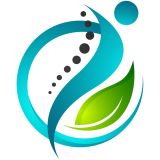In this article:
What is an Osteopathic Medicine Degree?
An osteopathic medicine degree, known as the Doctor of Osteopathic Medicine (DO), trains individuals to become osteopathic physicians. This type of medicine focuses on a whole-body approach to healthcare, which means doctors consider how different parts of the body work together and emphasize preventive care. While DOs can practice in all areas of medicine just like MDs (Doctors of Medicine), their training includes extra focus on the musculoskeletal system (bones, muscles, and joints) and osteopathic manipulative treatment (OMT), which uses hands-on techniques to treat and diagnose medical conditions.
Students in an osteopathic medicine program learn subjects like anatomy, biology, and clinical medicine, just like medical students training to become MDs. What sets them apart is the additional training in osteopathic principles, where they learn techniques to help diagnose and treat conditions by using their hands. This training also helps them focus on healing the whole person, not just addressing specific diseases or injuries.
Program Options
There are several program options available for those interested in pursuing an osteopathic medicine degree, each offering a path to becoming a Doctor of Osteopathic Medicine (DO). Here are the common educational options:
- Doctor of Osteopathic Medicine (DO): This is the primary degree for those aiming to become osteopathic physicians. It typically requires four years of medical school, followed by a residency program where students gain hands-on experience in a medical specialty.
- Dual Degree Programs (e.g., DO/PhD, DO/MBA): Some institutions offer dual-degree programs that allow students to earn a Doctor of Osteopathic Medicine degree along with another advanced degree, such as a PhD in a specialized field or a Master of Business Administration (MBA). These programs are designed for those looking to combine medical practice with research or healthcare management.
- Combined Undergraduate and DO Programs: These programs allow students to enter medical school directly after high school or an undergraduate program, completing both their undergraduate education and medical training in an accelerated, combined format.
Skills You’ll Learn
An osteopathic medicine degree equips students with a variety of skills necessary to provide high-quality care to patients. Here are some key skills learned during the program:
- Medical Knowledge: Students gain a thorough understanding of human anatomy, physiology, pharmacology, and pathology. They learn how to diagnose, treat, and manage various medical conditions.
- Osteopathic Manipulative Treatment (OMT): One of the core skills unique to osteopathic medicine is the ability to perform hands-on techniques to diagnose and treat musculoskeletal issues. OMT involves using the hands to relieve pain, improve circulation, and enhance the body’s ability to heal itself.
- Clinical Skills: Throughout the program, students learn to conduct physical exams, interpret diagnostic tests, and develop treatment plans. They gain experience working with patients in diverse clinical settings, practicing skills like taking patient histories, making diagnoses, and performing procedures.
- Patient-Centered Care: Students are trained to build strong, empathetic relationships with patients, focusing on treating the whole person — not just the illness. This includes addressing emotional, mental, and physical health factors to improve overall well-being.
- Problem-Solving and Critical Thinking: Osteopathic physicians must be able to think critically and analyze complex medical cases, making informed decisions about treatment options. They learn how to approach patient care holistically and use evidence-based practices to ensure the best outcomes.
What Can You Do with an Osteopathic Medicine Degree?
An osteopathic medicine degree opens up a wide range of career opportunities in the medical field. Here are some potential career paths:
- Osteopathic Physician (DO): The most common career option is to work as an osteopathic physician. DOs can specialize in various fields such as family medicine, pediatrics, internal medicine, surgery, cardiology, or emergency medicine. They provide care in hospitals, clinics, private practices, and other healthcare settings.
- Emergency Medicine Physician: DOs can also specialize in emergency medicine, where they respond to acute medical issues in emergency rooms or urgent care settings. They use their knowledge of osteopathic manipulative treatment (OMT) to help alleviate pain and assist in recovery during emergencies.
- Sports Medicine Physician: Osteopathic physicians with a focus on sports medicine treat athletes and active individuals. They help prevent and treat injuries, promote physical recovery, and use osteopathic techniques to improve function and performance.
- Surgeon: Some DOs choose to specialize in surgery, where they perform various types of surgeries in fields like orthopedic, neurosurgery, or general surgery. They combine traditional surgical methods with osteopathic principles to promote faster healing and overall recovery.
- Family Practitioner/Primary Care Physician: Many DOs work as primary care physicians, offering long-term care and prevention for individuals and families. They provide regular check-ups, manage chronic conditions, and emphasize preventive care to help patients maintain overall health.
- Researcher: For those interested in teaching or research, a DO can also pursue a career in academia, conducting research in various fields of medicine or teaching at medical schools. Dual degree programs, like DO/PhD, can open up opportunities in research and medical education.

